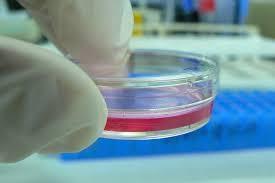Article published 02/28/17

During routine screening, a laboratorian working with replication incompetent HIV pseudovirions in a BSL2 laboratory tested HIV-1 positive. No risk factors were identified during the initial investigation and the laboratorian had no access to a BSL3 laboratory. Furthermore, the laboratorian did not recall any laboratory incident that could have resulted in an exposure.
The investigation concluded that the laboratorian was infected with a full-length infective clone. The infective clone was one that was handled by other researchers in a BSL3 laboratory and either contaminated the replication-defective culture or was mislabeled and mistakenly handled within the BSL2 lab. Also complicating this case report is the absence of a known exposure event. Italian investigators speculate if the infectious clone was transfected with a VSV-G plasmid, the resulting virus could have facilitated the infection through expanded viral tropism or augmented viral infectivity.
The authors conclude that a precise risk assessment and procedures’ control are necessary when multiple HIV clones are used within a laboratory to minimize hazards and prevent laboratory exposures.
The full article can be accessed here: Clin Infect Dis ciw851. DOI: https://doi.org/10.1093/cid/ciw851